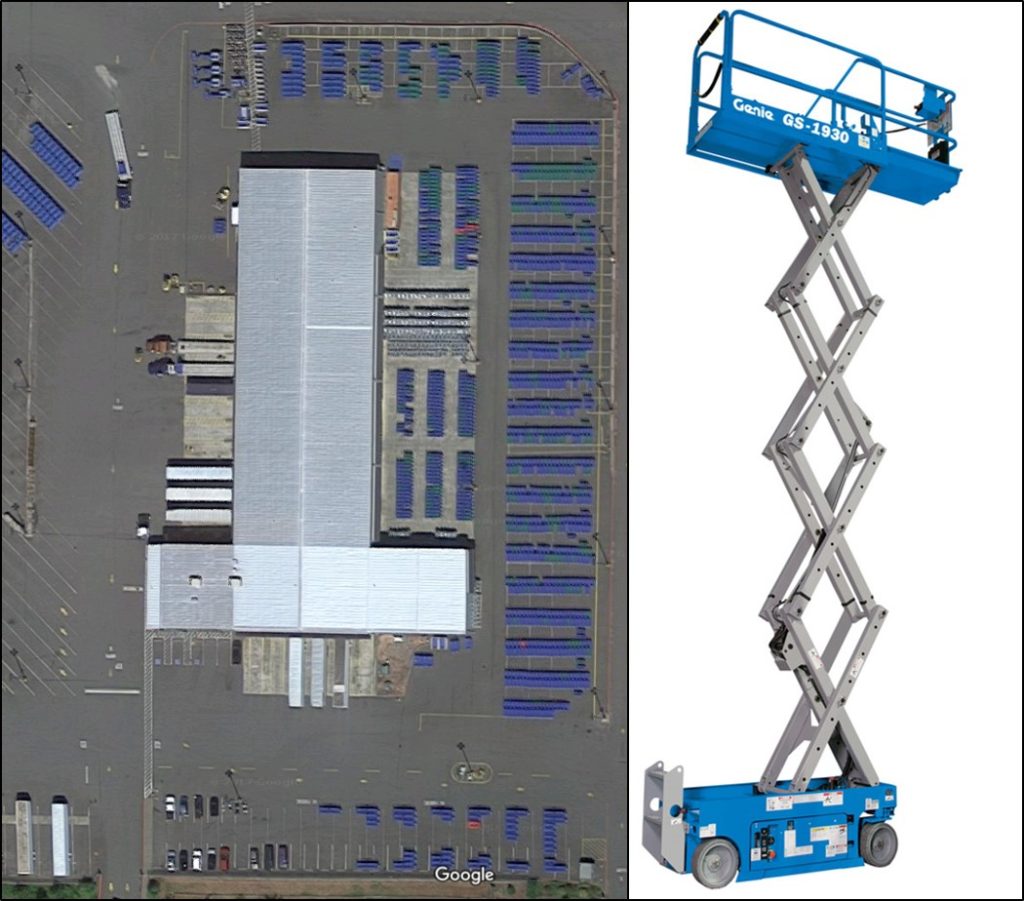Terex is a global manufacturer of lifting and material processing products. The Aerial Work Platforms (AWP) business unit sells many of its products under the well-known Genie brand name. Genie customers are mostly equipment rental companies that purchase high-volumes of units on an annual basis. Terex AWP operates its largest Genie finished product transfer center in North Bend, Washington. Last week, I had the pleasure of speaking with Dirk Becker and Marsha Hudson of Terex AWP about the yard management process improvement initiative they spearheaded at the company’s North Bend facility.
Legacy Yard Management
Many Genie units are made-to-order, with each unit having the customer’s requested features. Therefore, the units in the yard are distinct from one another, and most are pre-assigned to a given customer. Historically, the North Bend facility used a manual system to manage its yard of finished units. A wall-board diagram representing the yard layout was displayed in the warehouse. A sticker with each Genie unit’s serial number was placed in the appropriate location on the board, and a matching sticker was placed on the unit in the yard. To prep units for delivery, team members would go to the board, find the sticker with the appropriate serial number, write down or memorize the unit’s location in the yard, then go to the yard and find that unit. This process, from wall-board diagram to the unit location would take about six minutes on average. Of course, this was simply an initial step in the process of preparing units for shipment. It was manual, imprecise, and a bit cumbersome.
On a monthly basis, the North Bend facility conducted a full accounting of the items in the yard. The facility would shut down its shipping process for about four hours and deploy nine team members out to the yard to manually count units by serial number. Then the manual accounting of yard inventory would be reconciled with the ERP system of record. This process was cumbersome and disruptive to the facility’s normal daily shipping process.

YMS Selection and Deployment
Dirk and Marsha, as part of the IT group and responsible for continuous improvement initiatives, were aware of the opportunity to improve upon current yard management practices at the North Bend facility. Dirk engaged in discussions with members of a technology peer group to find RFID vendors. He described the yard management process and asked about potential technology solutions. PINC’s yard management system was suggested, and Dirk and Marsha evaluated its capabilities. Marsha convinced the North Bend team to run a pilot project on a small sample size of the yard for a 4-month period. They mapped the section between the buildings that stored the lion’s share of the units in the yard. In the next step, PINC representatives came in and mapped the entire yard. They decided to install the RFID reader on a golf cart and use the cart to automatically survey the yard’s inventory and location of inventory. It was also important to standardize the placement of tags. The team was able to capitalize on the disciplined standard of units, parked nose-to-nose and placed each RFID tag on the rear of each scissor unit and on the extended boom of boom units to assure proper communication between the reader and tags and to achieve the desired 98 and greater percent accuracy rate.
New YMS System and Benefits
The full-scale yard management system went live in August, and the process improvements were immediately visible. The process for identifying and locating a unit in the yard went from a 6-minute process down to 30 seconds. With approximately 50,000 new units coming into the facility per year, this comes out to over 70 weeks of labor savings per year (five minutes per unit at 50,000 units a year, 40 hour work week). In addition, there is no longer a need to conduct a monthly accounting of yard inventory since the PINC YMS provides a complete count on a daily basis through its online business intelligence capabilities. The new system provides a more-timely accounting of inventory, and the company no longer needs to shut down the shipping process to accomplish the task. The system also provides real-time visibility into the status of the yard including units on hand, arrived, shipped, and available capacity.
Next Steps
Terex AWP is looking at integrating the YMS system with the company’s ERP to enable an automatic inventory reconciliation. They’re also looking to enable automatic check in and check out of units as they pass through the gate. This will provide additional visibility into process step, inventory time on hand, etc. In addition, inventory visibility may be extended to the sales force to allow them to more easily communicate unit status such as their inventory on hand and unit availability and so on.

















Nice piece Clint